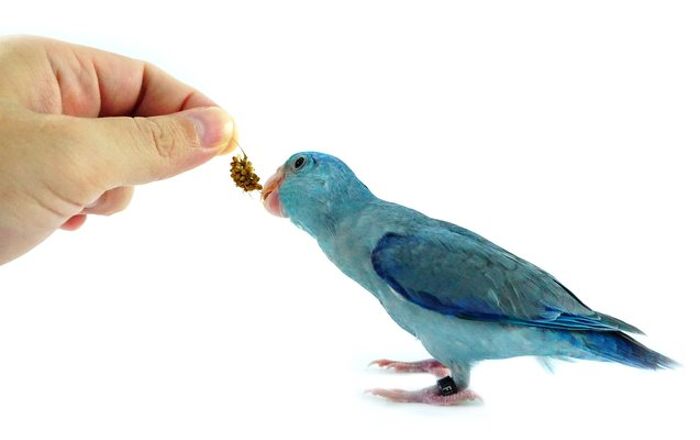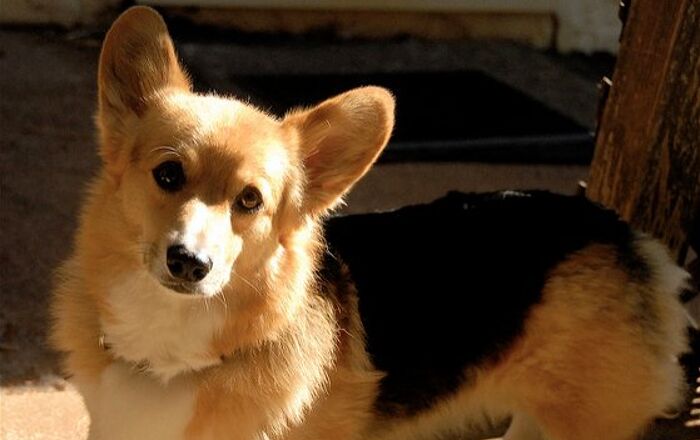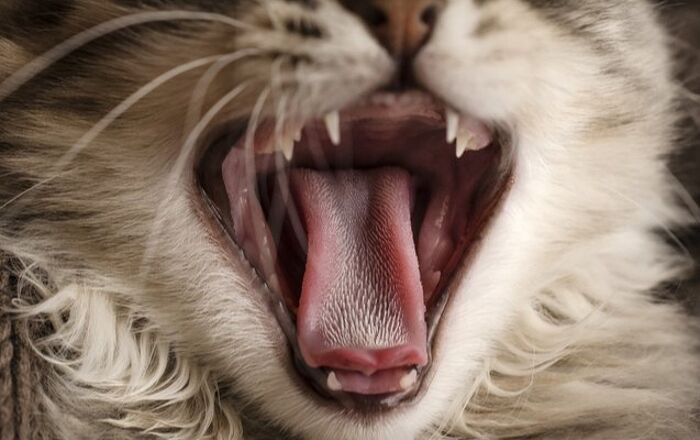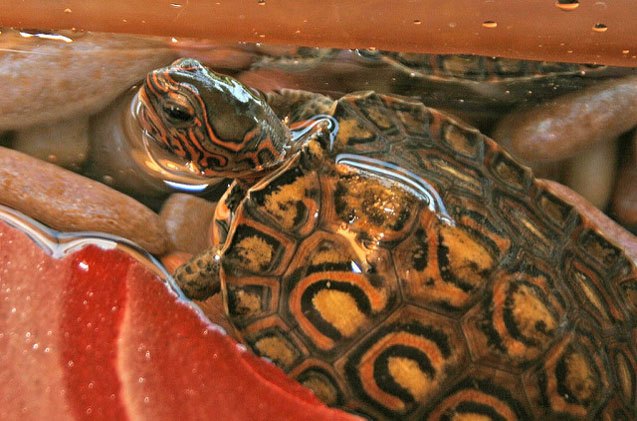
Central American Wood Turtle General Info
The Central American Wood Turtle, also known as the Ornate Wood Turtle, is a popular and common wood turtle within the pet trade. Those imported from the northern part of Costa Rica, in particular, are brightly colored, and they feature black eyespots along with lovely swirls of yellow and orange.
These turtles make wonderful pets because they become tame rather quickly, and they are intelligent and personable. They also remain at a size that is manageable, and they are hardy once they are established in the right enclosure.
The Central American Wood Turtle (also known as the Ornate Wood Turtle) is a popular pet.
Native Habitat
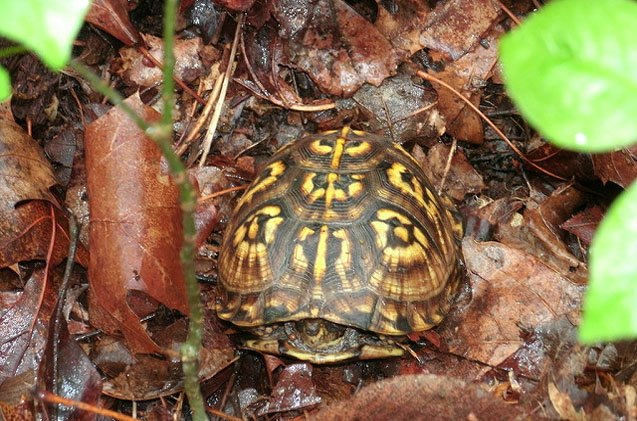
Central American Wood Turtles are found in wild habitats from northern Costa Rica to southern Nicaragua. It is actually one of four subspecies of the Painted Wood Turtle, and there are a total of eight Wood Turtle species within the Rhinoclemmys genus that make their home in Mexico and Central America.
Overall Description
Adult Central American Wood Turtles will be about 8” long. Males will have longer tails and will also be smaller than females.
Individual turtles will vary in terms of the patterns on their shells, with the Nicaragua turtles being less showy than their Costa Rican counterparts. Overall, these turtles are sociable and well-tempered, as well as smart. They can even be fed by hand.
Colors
The Central American Wood Turtle is known for coming in a variety of colors. Individuals that are from Costa Rica will showcase bright colors, while Ornate Wood Turtles from Nicaragua will be more subdued.
Some of these turtles will really stand out with yellow and orange swirls and different degrees of black eyespots on their carapace. They could also have a bit of red or pink on their plastron.
Central American Wood Turtles make wonderful pets because they become tame rather quickly, and they are intelligent and personable.
Environment

This is a semi-terrestrial turtle breed, so you will need to have an enclosure that will mimic the environment of a marshy pond turtle, but it will need to bit a bit drier.
You can keep your Central American Wood Turtle in an area that is outside, as long as it is 8’ by 8’. You can also keep your turtle in a large tub, a medium tub, or a stock tank if your pet will be indoors. A long and wide pen that is covered with a screen top is preferred over an aquarium tank, but if you are going to keep your turtle in a tank, it should be at least 75 gallons, with 50 gallons added for each additional turtle.
An indoor enclosure should have a substrate that consists of three layers. There should be a layer made up of pea gravel, then you should have a layer that is 10-12” deep and is made up of ½ peat moss and ½ dampened sand. Finally, you should have a thin layer made up of cypress mulch.
Give your turtle something like a paint tray or a cat litter pan filled with fresh, clean, filtered water. The water should be changed regularly to ensure its cleanliness. There should also be piles of hay, piles of leaves, and sheets of bark to provide your turtle with hiding spaces that are safe and secure while he is on land.
A UVB light bulb should be positioned overhead, along with a 100-watt light bulb over the basking area. A comfortable temperature for your turtle will be anywhere from 76-86°F. While slight fluctuations will typically be tolerated during the night, the temperature should be kept above 60°F. Basking temperature should be in the high 80s to low 90s Fahrenheit, and the water temperature should be around 75°F. You should also set the humidity to around 60%.
Ornate Wood Turtles are omnivorous, so they will enjoy eating redworms, earthworms, and crickets.
Care Requirements
Ornate Wood Turtles are omnivorous, so they will enjoy eating redworms, earthworms, and crickets. They should also be provided with plenty of salad to boost their nutrition. This salad could consist of shredded vegetables and fruits, such as mango, banana, apple, cantaloupe, squash, zucchini, and kale. To give your turtle all the nutrition that he needs, you can also dust his salad with a high quality multi-vitamin and calcium supplement powder.
Behavior
Central American Wood Turtles should be provided with various hiding places, such as piles of dried leaves and cork bark tubes, because they can be shy. You may notice that, as you approach, your turtle will run to a sheltered spot and then come back out cautiously if you begin to offer him some food.
Captive-hatched Ornate Wood Turtles will make better pets than those caught in the wild and imported. With proper care and handling, these intelligent turtles can become docile to the point that they can be fed by hand.
Photo credit: Jerry/Flickr; Christie Eden/Flickr; Amber/Flickr

